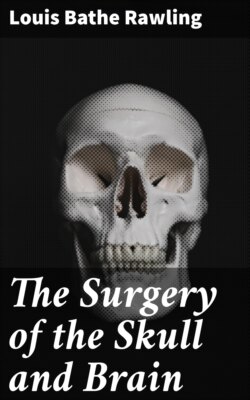Читать книгу The Surgery of the Skull and Brain - Louis Bathe Rawling - Страница 57
На сайте Литреса книга снята с продажи.
Fractures of the skull resulting from injuries received at or shortly after birth.
ОглавлениеIn the consideration of injuries to the skull and brain in babies the following points should be noted:—
1. The bones of the skull are elastic and pliable, and consequently a blow may lead to a ‘bending-in’, either temporary or permanent. Slight depressions may exist without any associated fracture, but all major depressions are accompanied by a fracture of the bone, especially evident on examination of the internal table.
2. The fibrous tissue intervening between the component parts of the vault tends to cause a limitation of the fracture to the particular bone affected. Downward extension to the base is of infrequent occurrence, but, when that region is involved, the fracture usually follows the transbasic lines described in the section dealing with fracture of the base of the skull (p. 82).
3. The dura is said to be more adherent to the inner table of the skull than in adults. The relative infrequency in the young of extra-dural hæmorrhage has been ascribed to this peculiarity. It would appear, however, more probable that the rarity of such hæmorrhages results from the bending-in, without splintering, of the bone.
4. The brain of the infant is equally—if not more—liable to bruising and laceration, but the results are far less definite than in adults. There can be no question that extensive cerebral injury may exist in the child without leading to the development of any definite localizing symptoms.
